Reviews
Josef von Sternberg
USA, 1928
Credits
Review by Leo Goldsmith
Posted on 24 February 2009
Source VHS
Categories The Silence After Sound: Hollywood’s Last Silent Movies
The waterfront of New York—the end of many journeys, the beginning of many adventures. Miles of docks wait day and night for strange cargo—and stranger men.
Of the millions of immigrants to the United States in the early twentieth century, Josef von Sternberg had disembarked upon the docks of New York (or, at least, of Ellis Island) more often than most. In 1901, at the age of seven, he emigrated from Austria with his family, and after a brief return to Vienna, he did so again in 1908. By this time, New York harbor was already a site of some symbolic importance to many poor, tired, and huddled masses yearning to be free—or else the first line of defense to those who would resist the influx. Over a million immigrants were processed at Ellis Island in 1907 alone, Chaplin’s tramp would memorably do the same a decade later, and von Sternberg would rehearse his own arrival at least twice more on film—in 1928’s The Docks of New York and 1932’s Blonde Venus.
Unlike Chaplin’s film, however, neither of von Sternberg’s films is quite an immigrant’s tale, though both explore the director’s unique preoccupation with the alien eros of his stars. The platinum love-goddess played by Marlene Dietrich, von Sternberg’s most famous collaborator (and perhaps creation), arrives in New York as the German wife of an American in the latter film, properly naturalized before unleashing her European “Hot Voodoo” onto America’s shores. In the former film, George Bancroft is the obscure object of desire, at once bulky and graceful, animalistic and suave, a whoring drunken demigod pulling into port in the capacity of a lowly steam-ship coal-stoker.
In contrast to the Ahabs and Hornblowers of maritime literature, the stoker, whose job it is to feed coal into a steam-ship’s furnace, is not commonly counted among the romantic figures of the sea. Holed up in the bowels of the ship, and thus out of range of the open sea’s fresh air and sunlight, the stoker operates in a hellish world of smoke and flame, the sub-sea-level equivalent of the factory worker on the line. And yet, by design or coincidence, 1928 saw the arrival of another such stoker into the great New York harbor of the imagination: Franz Kafka’s stoker, the paternal proletarian of the first chapter of the author’s first unpublished novel, Amerika, translated by Edwin Muir four years after its author’s death.
It remains unclear whether von Sternberg or Furthman knew Kafka’s work in 1928 (though the Austro-Hungarian-American director might have known the author’s work in German). But nonetheless, both novel and film use the figure of the stoker to draw upon a set of conventions about the liminality of port-life and the imagined place of New York harbor in the trade and immigration of the period. Kafka’s Amerika (originally titled Der Verschollene, or The Man Who Disappeared) utilizes the docks of New York as a natural disembarking-point for a more expansive immigrant narrative (albeit one far stranger than even Chaplin could imagine). Thus the city’s waterfront appears ambiguously to Kafka’s protagonist, the seventeen-year-old Karl Rossmann, as both bright and menacing as he sails past an intensely sunlit Statue of Liberty, a sword in her hand in place of a torch. Kafka’s stoker appears to Karl as lumbering, yet fatherly, a resource of old-world and new-world wisdom who cautions the young immigrant, “Different ports have different morals.”
This maxim could serve as an epigram to von Sternberg’s entire career—his interests lie in exploring the dark, exotic milieu of the docks themselves as well as those marginalized figures who inhabit or pass through them. Morocco, Macao, Shanghai, New York—von Sternberg’s greatest films are about places in what Lacan might call an imaginary sense, or what Peter Wollen identifies as “heterocosms,” places that are recognizable, but dream-like, resembling our world but different from it.1 In contrast to Karl, von Sternberg’s protagonist is welcomed, not by an equivocal Statue of Liberty, but a dreary and forbidding New York skyline. The principal setting of The Docks of New York, a local dive called the Sandbar, is already said at the film’s outset to have “vanished” (not unlike Kafka’s disappearing protagonist). It exists, like all of von Sterberg’s settings, outside of time, and the director characteristically pictures this world in depth, backlit and foggy, mesh and tackle in the foreground, a blurry melee of drunken revelry behind. The Sandbar is the maritime working-class foil to the mobsters’ bacchanal in Underworld—unhinged, seductive, dangerous. In both films, and through both of these spaces, Bancroft’s Bill Roberts wanders around like the Minotaur of the maze, weaving between streamers, ascending ropes, and navigating pools of dark, watery shadow.
Having ascended from the inky depths of his steamer, where crude images of whores and beer-halls are chalked onto the walls of the engine room (“Violet … Mamie … Helen … beer … beer … beer…”), Bill Roberts disembarks for one night of carousing ashore. At the Sandbar, the camera must weave its way through the obstructive mesh and bric-a-brac hanging from the ceiling, but Roberts is a master of the space, lifting a barrel of liquor over his head with fratboy enthusiasm, navigating the cluttered, smoky interior smoothly, shoving drunks out of their chairs, and mussing their hair playfully. When wandering around the docks at night he spots a lady suicide attempting to drown herself in New York Harbor, he nonchalantly discards his hat and cigarette, and with extreme deliberation he launches himself into the water to save her.
In von Sternberg’s oeuvre, George Bancroft looms nearly as large as Marlene Dietrich—indeed, the consistency of the cycle of films on which Bancroft and von Sternberg collaborated in the 1920s suggests that von Sternberg was thinking very deeply about the power of star-system semiology long before he fired up the Marlene myth-machine in the following decade in Morocco, Shanghai Express, Blonde Venus, et al. But Bancroft’s persona is a strange one - large, volatile, and buccaneerish - and not quite so consistent or hermetic as Dietrich’s is in the later cycle. In Underworld and the later Thunderbolt, he plays boisterous, but loveable psychopaths, clear antecedents of the iconic gangsters of 1930s films like White Heat and Scarface. But Bill Roberts in The Docks of New York is distinct, an inscrutable mix of cuddliness and callousness, sentimentality and brutality. After fishing Mae, Betty Compson’s suicidal prostitute, out of the harbor, Roberts woos her with all the refinement one might expect of a coal-stoker. He steals her some “new rags” to wear, invites her down to the Sandbar for a late-night snack of cold coffee and sandwiches, and eventually asks to marry her that very night. “You don’t know Bill Roberts,” he explains. “I’ll try anything once!”
This, along with a characteristically chaotic wedding at the Sandbar, does not seem like a promising start to holy matrimony. But then, like the fickle Roberts, Mae is herself a compromised figure, first seen in her watery reflection seconds before she plunges off the dock and into the East River. As Mae, Compson effects an all-too-knowing nonchalance that matches even Bancroft’s, and in von Sternberg’s startling compositions she even seems a ghostly premonition of Dietrich, with an aura of white, mussed hair, a lip that occasionally curls into a weary smile, and a heavy-lidded sidelong glance of insouciance. Recovered from her suicide attempt, bedraggled, waterlogged, and chain-smoking in bed, she strikes matches on a bedpost that frames her glowing head like a rusty halo. “I’ve had too many good times,” she tells Roberts, in a line that seems straight out of Morocco.
The question of whether a sustainable love between these two characters is possible or even deserved - whether it is undertaken in sincerity or on a dare, and whether it will last any longer than Bill Roberts’ twenty-four-hour shore-leave - is the principal concern of the film’s plot. We see, as a matter of contrast, two analogous characters for whom any such love does not seem deserved: Andy, Bill’s sullen, lecherous superior, and his semi-estranged wife, a prostitute named Lou who is also Mae’s friend (the latter is played with utmost bedraggled vampishness by Olga Baclanova of Paul Leni’s The Man Who Laughs and Tod Browning�s Freaks). With examples such as these to follow, how can love be possible on the docks of New York? Lou’s salutary farewell to Mae seems to sum up all of one’s expectations for happiness between the stoker and the whore: “I hope you have better luck than me—but I doubt it!”
But then, as Laura Mulvey has observed, von Sternberg is a director of situations, not of suspense—it is his mastery of the subtle eye-line interplay of silent cinema, his command of mise-en-scene and mood, that makes the love between these characters credible, and not any laws or logic belonging to the real world. Later in the film, Bill asks Mae, “What did you ever do that makes you worse than me?” and this question suggests a balance and symmetry in their personae that transcends any imperatives of social realism. Here as elsewhere, New York is the site of opportunity, reinvention and self-actualization, but in von Sternberg’s imagination none of these is constrained by the oppressiveness of naturalism. Mae’s fall from grace requires a corresponding leap of faith from Bill, a second dive into the glittering, gray waves of New York Harbor in all its strange and grimy poetry.
- These bizarro worlds appear consistently in von Sternberg’s work, from the dredged mud-flats of his first, independently produced film, The Salvation Hunters, to the alternate universe of post-war Japan in 1953’s Anatahan. In 1927’s Underworld, the director’s second major film and first box-office success, Chicago is figured as a kind of archetypal city, the nexus of everything wholesome and everything corrupt about America’s heart. Rebuilt in the wake of the 1871 fire, the city is a clockwork metropolis, with new sidewalks and the mechanical precision of a machine gun. And unlike New York, it’s uncontaminated by foreign influence, and therefore something for which America alone could take credit or blame. The underworld ports of Manhatta, by contrast, are a place of strangeness and the uncanny, a milieu distinct from but in close proximity to the romantic docklands of Melville and Whitman (and later Paul Strand and Charles Sheeler), the haunts of those curious crowds of men and women, middle-class bartlebies all, crossing Brooklyn Ferry. ↩
More The Silence After Sound: Hollywood’s Last Silent Movies
-
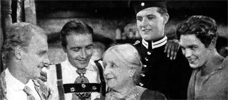
Four Sons
1928 -
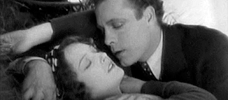
The Crowd
1928 -
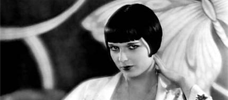
A Girl in Every Port
1928 -
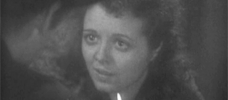
Street Angel
1928 -

The Patsy
1928 -
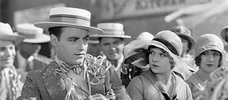
Lonesome
1928 -

Our Dancing Daughters
1928 -
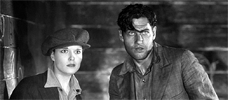
Beggars of Life
1928 -
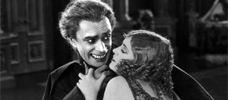
The Man Who Laughs
1928 -

The Docks of New York
1928 -
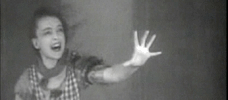
The Wind
1928 -
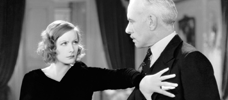
A Woman of Affairs
1928 -
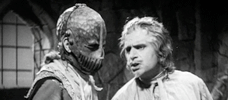
Iron Mask
1929 -
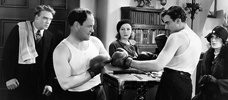
The Single Standard
1929 -

City Girl
1930 -
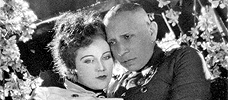
The Wedding March
1928
We don’t do comments anymore, but you may contact us here or find us on Twitter or Facebook.



